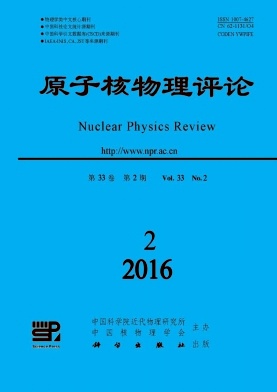New Generation of Experiments for the Investigation of Stellar (p, γ) Reaction Rates Using SAMURAI
doi: 10.11804/NuclPhysRev.33.02.146
- Publish Date: 2016-06-20
-
Key words:
- type-I X-ray burst /
- rp-process /
- (p, /
- &gamma /
- ) reaction rate /
- neutron-deficient RI beam
Abstract: The future experimental campaign with the SAMURAI setup at RIKEN will explore a wide range of neutron-deficient nuclei with a particular focus on the most critical (p, γ) reaction rates relevant to the astrophysical rp-process in type-I X-ray bursts (XRB). Intense radioactive-ion (RI) beams at an energy of a few hundred MeV/nucleon will be deployed to populate proton-unbound states in the nuclei of interest through the Coulomb excitation or nucleon-removal processes. The decay of these states into a proton and a heavy residue will be measured using complete kinematics and the information about time
reversal proton-capture process will be obtained. This method will provide the vital experimental data on the resonances, which dominate the stellar (p;
) reaction rates, as well as on the direct proton-capture process for some other cases. The experimental setup will utilize for the first time the High-Resolution 90◦-mode of the SAMURAI spectrometer in combination with the existing detection systems, including custom-designed Si-strip detectors for simultaneous detection and tracking of heavy ions and protons emitted from the target. The details of the experimental method and the utilized apparatus are discussed in this paper.
| Citation: | V. Panin, K. Yoneda, M. Kurokawa, J. Blackmon, Z. Elekes, D. Kim, T. Motobayashi, et al. New Generation of Experiments for the Investigation of Stellar (p, γ) Reaction Rates Using SAMURAI[J]. Nuclear Physics Review, 2016, 33(2): 146-151. doi: 10.11804/NuclPhysRev.33.02.146 |






 甘公网安备 62010202000723号
甘公网安备 62010202000723号 DownLoad:
DownLoad: